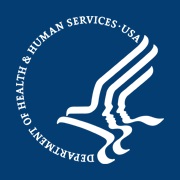4 Health Payer Industry News Items Revealed at HIMSS16
The surge of coverage has definitely impacted the health payer industry, which is working out new methods for covering the medical care of the many new enrollees.

- With the 2016 HIMSS Conference and Exhibition closing its doors, it grows important to address how the health payer industry remains vital to both the ongoing technology advancements in medicine and patient care in general. Below we outline some major announcements that occurred during the week of the 2016 HIMSS conference.

HHS tied 30 percent of Medicare reimbursement to value before deadline
The Department of Health and Human Services (HHS) announced last Thursday that it has met its goal of linking 30 percent of Medicare payments to alternative methods of reimbursement based on quality, according to a news release from the federal agency.
“We reached this goal in partnership with the thousands of providers who collaborated with us in innovation,” Dr. Patrick Conway, Deputy Administrator for Innovation & Quality and CMS Chief Medical Officer, said in a public statement. “It’s in our common interest – as patients, providers, businesses, health plans, taxpayers - to build a health care delivery system that delivers better care; spends health care dollars more wisely; and makes individuals and communities healthier.”
This news is likely to affect the health payer industry, as it will grow more vital to keep up with regulatory alignments aimed at implementing pay-for-performance measures. HHS attributes the greater focus on quality versus quantity in healthcare to the Patient Protection and Affordable Care Act.
“Improving the quality and affordability of care for all Americans has always been a pillar of the Affordable Care Act, alongside expanding access to health care,” HHS Secretary Sylvia M. Burwell stated in the release. “The law gives us the tools to put patients at the center of their care, improve quality and help make care more affordable over the long term.”
The Affordable Care Act established the Medicare Shared Savings Program and the Center for Medicare and Medicaid Innovation, which have brought forth new value-based reimbursement models for healthcare providers. Almost one year ahead of the scheduled deadline, more than 10 million Medicare beneficiaries are being treated through an alternative payment model meant to improve care coordination and focus on quality.
Medicaid program focuses on health IT interoperability
During the 2016 HIMSS conference in Las Vegas, the Centers for Medicare & Medicaid Services (CMS) Acting Administrator Andy Slavitt and National Coordinator for Health IT Karen DeSalvo pushed forward the need for greater interoperability within the Medicaid program.
Stronger connectivity and interoperability between multiple medical facilities could lead to fewer medical errors and thereby improve patient safety and satisfaction. Health IT interoperability can also improve care coordination and boost the quality of patient care.
Essentially, adopting innovative technologies could modernize the Medicaid program and ensure better health outcomes among beneficiaries. A new initiative has been established by CMS and the Office of the National Coordinator for Health IT (ONC) meant to bring more interoperable products into facilities serving Medicaid beneficiaries.
The health payer industry could also benefit from incorporating more interoperable IT systems among insurance companies as well as encouraging the organizations they serve to implement greater connectivity.
20 million Americans have health insurance due to Affordable Care Act
Toward the end of last week, HHS announced that the Affordable Care Act and its individual mandate has brought health insurance to 20 million Americans around the country. The news release stated that a “historic reduction” in the number of uninsured citizens has occurred since the Affordable Care Act was established in 2010, as an additional 20 million people gained healthcare coverage than before.

The additional healthcare coverage comes in the form of Medicaid expansion as well as subsidies provided through the health insurance exchange. Young adults are also offered more protection in terms of medical insurance. Young adults under 26 years old can stay on their parents’ insurance plans because of the clauses in the Affordable Care Act.
“We have seen progress in the last six years that the country has sought for generations,” Burwell said in a public statement. “Americans with insurance through the Health Insurance Marketplace or through their employers have benefited from better coverage and a reduction in the growth in health care costs.”
This has led to 6.1 million young adults under 26 years of age to continue their medical coverage under their parents’ plans. The healthcare law has clearly expanded access to medical care around the nation. The surge of coverage has definitely impacted the health payer industry, which is working out new methods for covering the medical care of the many new enrollees.
Flint residents received Medicaid coverage expansion
About two years ago, water contamination occurred in Flint, Michigan when the city changed its water source to the Flint River. The transition lacked corrosion control treatment, which led older pipes to leak lead into the drinking water. This led to a variety of health concerns among the residents of Flint.
However, HHS has announced that it will expand Medicaid coverage to pregnant women and children in Flint who have suffered from the water contamination. The residents who receive this coverage must be at 400 percent of the federal poverty level or less.
Others harmed by the Flint water contamination are being offered a chance to buy unsubsidized health insurance. The funding set up for this Medicaid expansion is set to last for the next five years.
“Expanding Medicaid coverage to tens of thousands of expectant mothers and youth means the most vulnerable citizens served by the Flint water supply can now be connected to a wide range of needed health and developmental services, including lead-blood level monitoring and behavioral health services,” Burwell said in a news release.
